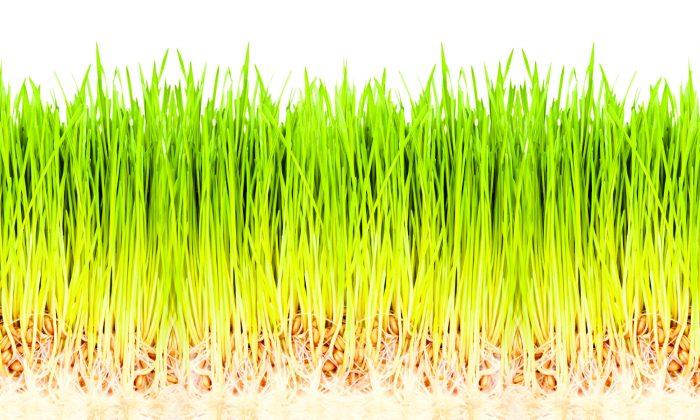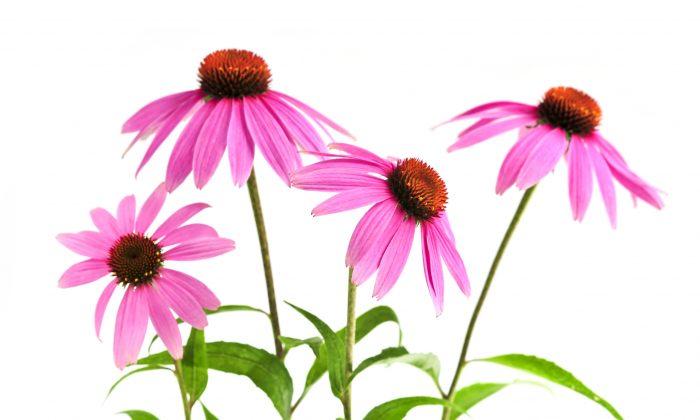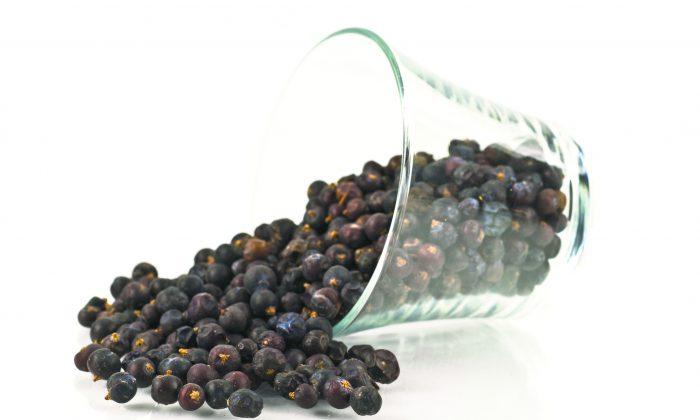Among all the grains, wheat (Triticum aestivum) holds a special distinction: It contains all the essential elements for human life.
All of these vitamins, minerals, proteins, and starches are found in a grain of wheat in perfectly-balanced partnership, as nature intends. When this grain is sprouted, not only do all these nutrients increase, but through the activation of enzymes, they also become more easily digestible.
Juice from freshly sprouted wheatgrass contains high amounts of a large range of vitamins including A, B, C, and E, as well as minerals such as sodium and potassium in natural partnership, about half as much iron as spinach or chard but without the oxalic acid, magnesium, phosphorous, and trace elements such as selenium and zinc.
Wheatgrass juice is the freshest, greenest food you can eat, said Aaron Matsil of Perfect Foods, a company with a 24/7 indoor growing facility and distribution system outside of New York City. “It’s still growing to the minute that you consume it.”
“Because you’re juicing it—you’re not processing it, you’re not pasteurizing it—it has live nutrients that you wouldn’t be able to get from a packaged juice,” Matsil said. “It has micronutrients that are still intact—enzymes that are still active and haven’t been denatured by processing and are still able to interact in your body and be absorbed and other micronutrients that normally would dissipate very quickly after you process the food.”
Being around 70 percent chlorophyll, wheatgrass juice has been known for some time simply as “liquid chlorophyll.” Wheatgrass can help normalize blood pressure, digestion, and promote general detoxification of the body. The sprouting process takes 7 to 10 days, upon which the young wheatgrass can be harvested and juiced. A specially designed juicer is used to masticate the grass, extracting the juice and preserving the essential whole live nutrients.
Matsil’s father, Harley Matsil, started his company in a basement in Brighton Beach, Brooklyn, in 1982, when wheatgrass was popular in California but hadn’t caught on in the New York City area.
The company pioneered the use of wheatgrass in the New york area. Through word of mouth, it took a humble operation that now grows to produce 3,000 trays a week, delivering primarily to health food stores and juice bars, and sometimes to homes. The indoor growing facility is the largest in the world; growing wheatgrass indoors allows for better control of factors as well as more light (thus nutrients) than possible in outdoor conditions.
Over the years, the Matsils have heard their share of stories from clients reporting back the benefits they’ve experienced.
“Usually the first thing people will say after a few days is: ‘I tried it and I just felt a little more energy, ... I was able to sleep better, I woke up more refreshed,’” Aaron Matsil said. A couple of weeks later, he’ll hear back about people feeling better in general, and noticing healthier skin, nails, and hair.
And then there’s another category: people who report improvement from any kind of degenerative disease, chronic pain, back pain or allergies, or a skin-related problems. “Anything that’s been chronically a problem, dissipates, or lessens,” Matsil said.
He also frequently hears back from people fighting cancer. “I would say 15 percent of regular wheatgrass drinkers are fighting cancer and have been doing so for many years and have had good results—very good results—not everyone, but absolutely. Diabetes, cancer, arthritis, we hear stories all the time.”
His father, Harley, recounted the case of a man with lymphatic cancer in the company’s early days. “He asked me if I could help him learn how to grow wheatgrass on his own. We gathered the supplies (soil, young trays, a misting bottle, and a shop light) and I drove to his home in Spring Valley.” Over the course of six hours, he showed him in detail how to grow wheatgrass step-by-step, and got him started growing wheatgrass.
“I didn’t hear from him after that. He found his own soil supplier and kept to himself. A year later or so he called because he needed seeds. It was then that he told me his doctor said he was cancer-free. The doctors said it must have been a misdiagnosis because the cancer was said to be terminal; however, he got the diagnosis from three separate doctors. Impossible. His therapy was drinking four ounces of wheatgrass every day and not eating red meat—that was it. The doctors were baffled.”
About 20 years later, while doing a store demo, Harley Matsil heard someone call his name. “And that was him, still alive and well, now 20 years since I met him.” he said. “He continues to drink wheatgrass every single day and for the rest of the day he stayed by my side during that demo. He insisted to every person that listened that every word I said was true and that I had surely saved his life.”
Studies
There are some preliminary studies on wheatgrass, but not many, and according to Aaron Matsil, they’re flawed in approach.
“The problem is most of those clinical studies when they do a clinical double blind thorough study, they’re funded by a large research institute that has millions of dollars to throw at it, if necessary, and they’re going to try to isolate one factor in it and try to synthesize it and try to sell it in pill form.”
But wheatgrass has many nutrients that are acting together to produce the result—not necessarily a single thing, said Aaron Matsil.
“That said, whatever studies there are, they are promising,” he said. Studies include one on ulcerative colitis, others on whether wheatgrass can increase oxygenation. A doctor in Australia has created an extract from wheatgrass for topical use on the skin, with reported good results.
In a pilot study published in Nutrition and Cancer 2007, breast cancer patients who drank wheatgrass juice daily showed a decreased need for blood- and bone marrow-building medications during chemotherapy, without diminishing the effects of the therapy.
In another pilot study published in Indian Pediatric 2004, children with thalassemia (a hereditary form of anemia, which often requires blood transfusions), were given 100 ml of wheatgrass juice daily, half showed reduced need for transfusions. No adverse effects were observed.
Please consult your primary care physician or other health care provider with any medical questions or concerns.
Gluten-Free
Although called “wheat” grass, thankfully for those who are gluten-intolerant, it is in fact gluten-free.
Wheat allergies are usually a reaction to the gluten found in the wheat berry. Wheatgrass is a vegetable, cut before the wheat plant forms the grain (berry) and so therefore has no gluten.
Caution is still recommended as there is a slight chance that ungerminated seed could get into the juice. Although very unlikely, for those with severe gluten intolerance, it is wise to juice your own and to check with your doctor or nutritionist before adding wheatgrass to your diet.
Be sure to cut above the seed line so seeds do not get into your juicer. If purchasing wheatgrass at a health food store or juice bar, ask the person preparing your juice to be very careful not to include any seeds.
Channaly Philipp contributed to this report.
Luke Hughes is a classical Western herbalist and horticulturist based in Sydney, Australia.
Dosage and Side Effects
As a daily nutritional supplement it is recommended to take between one and two ounces of wheatgrass juice, preferably on an empty stomach. Slowly sipping small amounts is the best method. As with anything it is wise to always start slowly and increase the dosage over time. As part of a healing regime, two to four ounces a day should be adequate.
For people with degenerative disease or trying to drastically improve their health, Aaron Matsil recommends drinking upward to four ounces a day; for someone who has cancer, six ounces.
Side effects like headaches may be experienced as the body starts to clear out any accumulated waste matter and toxins.
The History of Wheatgrass
Humankind has sprouted seeds as medicine and to supplement diets for many thousands of years. Wheat has been cultivated for over 5,000 years, and can be traced back at least to ancient Egypt and most probably to earlier Mesopotamian civilizations. It is supposed that the ancient Egyptians found the young leafy tips of wheat sacred and prized them for their health-giving effects.
Ancient Chinese manuscripts record the use of sprouted seeds regularly as far back as 3,000 B.C., with therapeutic uses including, digestive disorders, muscular cramps, and bloating. The Chinese and other far Eastern peoples still sprout wheat and other seeds as part of their daily diet.
In more recent times, the consumption of wheatgrass in the West re-emerged in the 1930s after an American agricultural chemist by the name of Dr. Charles Schnabel nursed his sick chickens back to health by feeding them freshly cut wheatgrass. Not only did they recover their health but their egg laying rate went from one every three days to an egg every day. Schnabel was previously aware that beef cattle showed tremendous weight gain when allowed to graze on wheatgrass in spring, and dairy cattle increased milk and butterfat production by 30 percent.
Schnabel and other scientists found that the nutrient content of wheatgrass was at its highest just before what is referred to as the “jointing stage” of growth (when the first node is visible at the base of the shoot, it feels like a swollen bump). At this stage the concentration of nutrients is at its peak, higher than any other dark green leafy vegetable. Schnabel and some investors at that time went on to commercially produce what was probably the world’s first multivitamin tablets from dehydrated cereal grasses (mainly wheatgrass).
In 1926 another scientist, Dr. C. Saunders, published research titled “The Nutritional Value of Chlorophyll as Related to Hemoglobin Formation” in the Proceedings of the Society for Experimental Biology and Medicine. The source of chlorophyll for that research came from dehydrated wheatgrass provided by Schnabel and ignited further study into the effects of chlorophyll on human health, particularly its detoxifying effects.
Medical journals at the time published positive results when cereal grass tablets were included in the diets of the patients of gynecologists, ophthalmologists, dentists, and other medical practitioners. Doctors found that human mothers produced more, richer milk and healthier babies with a lower infant mortality rate when cereal grass tablets were added to their diets.
However with the introduction of synthetic vitamins (synthesized from petroleum derivatives) in the 1940s, this wheatgrass-based multivitamin went out of favor as the general public embraced the so-called miracles of modern science.
In the 1940s, Dr. Anne Wigmore reportedly cured herself of colon cancer by juicing and eating fresh blades of wheatgrass and eating fresh sprouts and greens. She first learned of the healing properties of wheatgrass during World War I when her grandmother used grasses and other herbs to heal wounded soldiers in the European village where she was born.
In “The Wheatgrass Book” Wigmore writes; “Whether you suffer from chronic fatigue, sinusitis, ulcers, or a more serious illness like cancer, wheatgrass chlorophyll extracted from seven-day-old wheat sprouts may help you even where other medicines have failed. Of course, nothing can replace a sound diet, exercise, and a positive attitude in keeping you in top shape. But wheatgrass can give you energy and strength to help you gain better control of your health.”






Friends Read Free